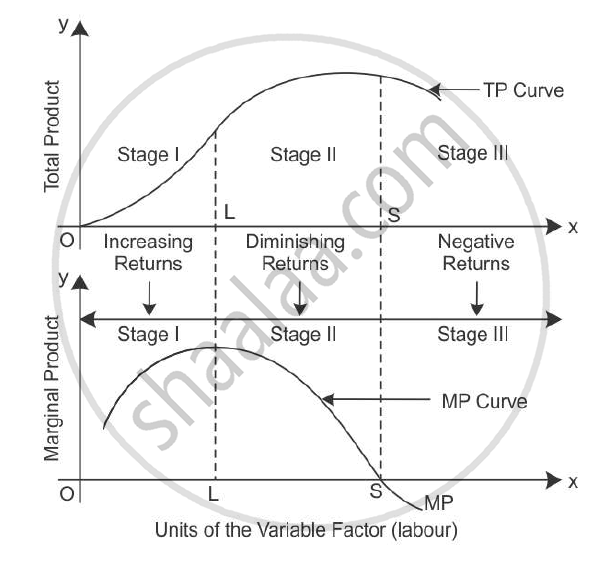Advertisements
Advertisements
Question
Give the behaviour of marginal product and total product as more and more units of only one input are employed while keeping other inputs as constant.
Solution
The behaviour of marginal product and total product as more and more units of only one input are employed and remain other inputs constant can be explained through an illustration
| Units of Fixed Factor |
Units of Variable Factor |
TP | MP | Stages |
| 1 | 1 | 4 | 4 |
Increasing MP (Increasing returns to a factor) |
| 1 | 2 | 12 | 8 | |
| 1 | 3 | 24 | 12 | |
| 1 | 4 | 32 | 8 |
Diminishing MP (Diminishing returns to a factor) |
| 1 | 5 | 34 | 2 | |
| 1 | 6 | 34 | 0 | |
| 1 | 7 | 30 | -4 |
Negative MP (Negative returns to a factor) |
| 1 | 8 | 21 | -9 | |
| 1 | 9 | 10 | -11 |
In the above table,
Stage I: As more units of factor input are used, MP tends to rise to 3 units of factor input are used. Here, the total product increases at an increasing rate which is called increasing returns to the factor input.
Stage II: However, when the 4th unit of factor input is used, the diminishing returns set in, where MP starts decreasing and TP increases at a decreasing rate. Diminishing MP reduces to zero. The total output is the maximum when the marginal output is zero.
Stage III: When MP is negative, TP starts declining from 34 to 10 when the 9th unit is employed.

APPEARS IN
RELATED QUESTIONS
Complete the following table:
|
Output (Units) |
Average Cost (Rs) |
Marginal Cost (Rs) |
|
1 |
12 |
……. |
|
2 |
10 |
…….. |
|
3 |
……. |
10 |
|
4 |
10.5 |
…….. |
|
5 |
11 |
…….. |
|
6 |
…….. |
17 |
What is the total product of an input?
